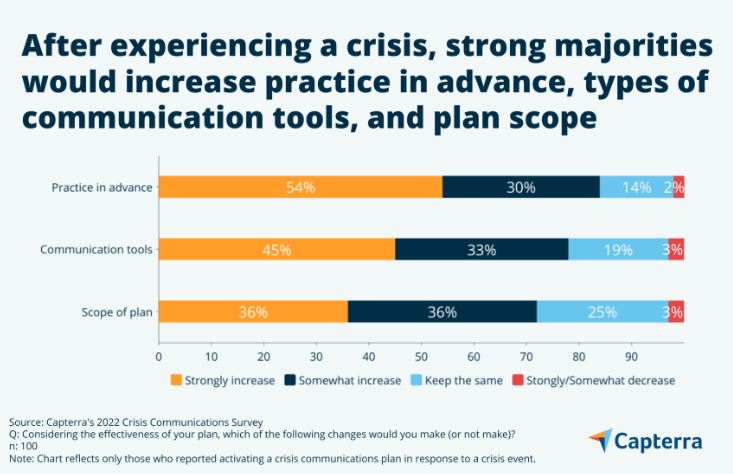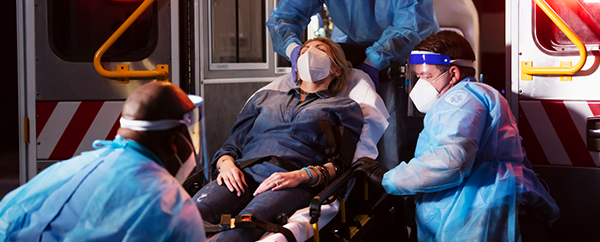Is your commercial insurance client ready for the next crisis?
- Only 49% of U.S. businesses have a formal crisis communications plan
- Of those business leaders who have a plan, 72% say they need to broaden the scope of the plan.
- Share these elements of a crisis management plan to help your commercial insurance clients enhance their crisis plans.
Cyberattacks are growing more proficient and widespread. Wildfires are becoming more prevalent. Flood incidents are increasing. Technology is great when it’s working, but causes a crisis when it’s not. In the face of these adverse events, does your commercial client have a crisis communications plan?
The absence of a well-defined plan can damage your reputation, confuse stakeholders and bewilder employees, possibly putting them in harm’s way.
Less than half of U.S. businesses have a formal crisis communications plan. Another 28% have an informal plan; and 23% say they have no plan at all, according to a survey by Capterra. (The infographics in this article are provided by Capterra and used with their permission.)
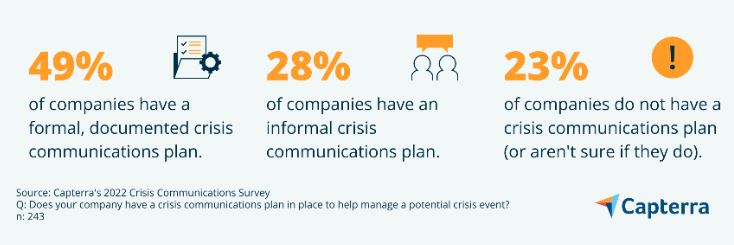
What are the most common crisis events?
Crisis events run the gamut, as you can see in the infographic below. So your plan should also cover a variety of scenarios. Capterra’s survey shows that cyberattacks are the most common (28%), followed by technology failures (22%), workplace violence or threats (19%), health-related crises (16%), natural disasters (9%), and other PR crises (6%).
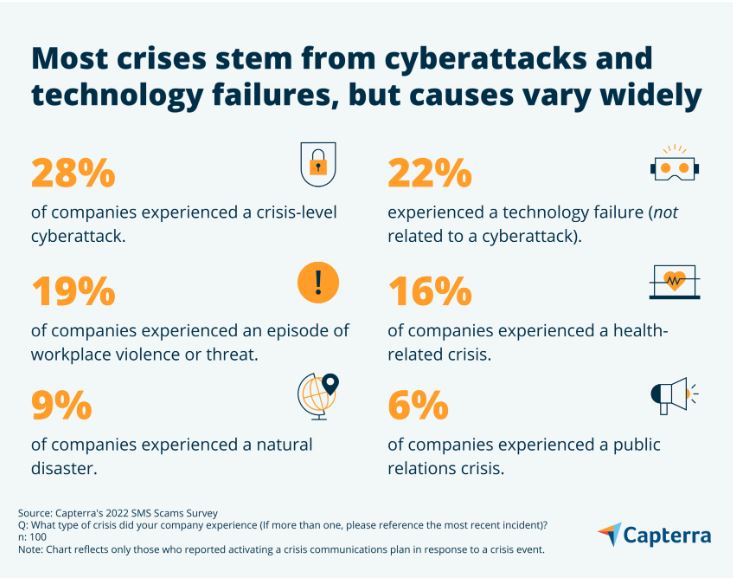
Related: Cybersecurity and data protection in our new reality
What should a crisis communications plan include?
The plan should call out the various groups who need to be notified of the crisis and given a status of your operating capacity and an overview of the issue. Your messaging won’t necessarily be the same for all audiences, but Capterra suggests you consider these:
- Customers or clients
- Employees
- Vendors and other partners
- Regulatory authorities
- Insurance companies
- General public
Who should help develop your plan? Leaders from these top three groups: IT, Operations and Public Relations.
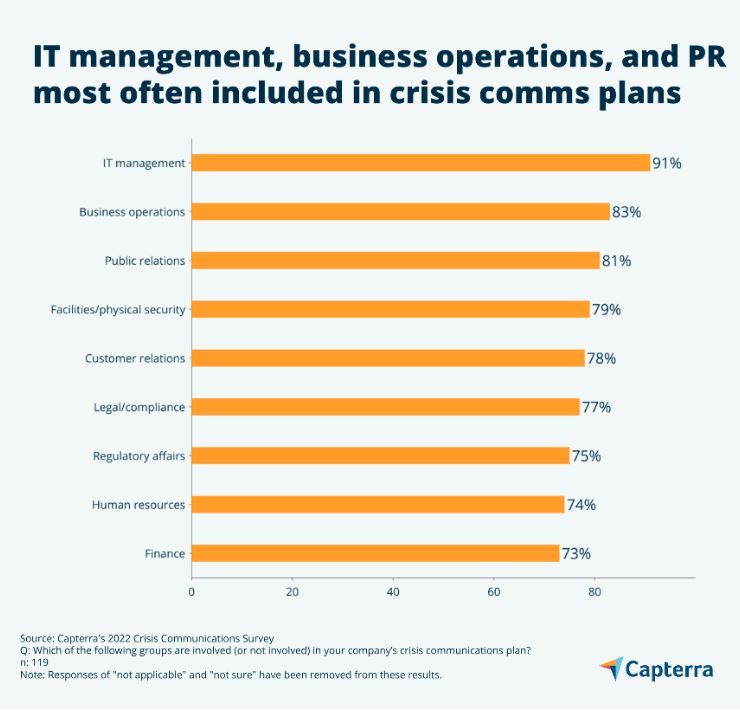
Related: Disaster emergency plans: How vulnerable is your business?
Your plan should clearly define who’s authorized to speak on behalf of the company during a crisis. Include talking points for leadership and a warning to employees not to make any statements about the event to anyone outside the company, whether verbally or on social media.
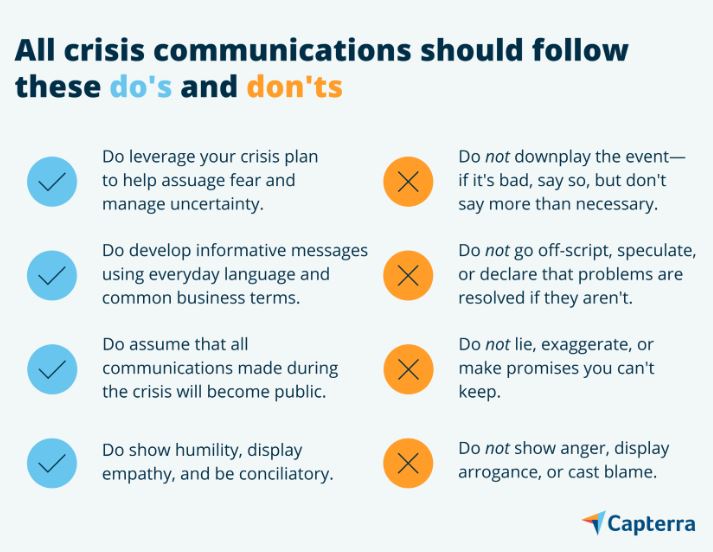
Other important additions to the crisis communications plan include
- Having an up-to-date list of employees plus their cell phone and home phone numbers maintained by HR. The list should also include where in the building(s) they work.
- Planning for a wide range of crisis scenarios and practice them with your team.
- Providing messaging templates with talking points for relevant audiences, different severity levels, and for the most-likely crisis scenarios.
Related: Update your natural disaster emergency response plan
Most businesses are not prepared
“A full 84% of business leaders who have been through a crisis say they would increase practicing in advance,” says Capterra. Some 78% say they’d increase the tools used for communication; 72% said they’d increase the scope of their communications plan.
